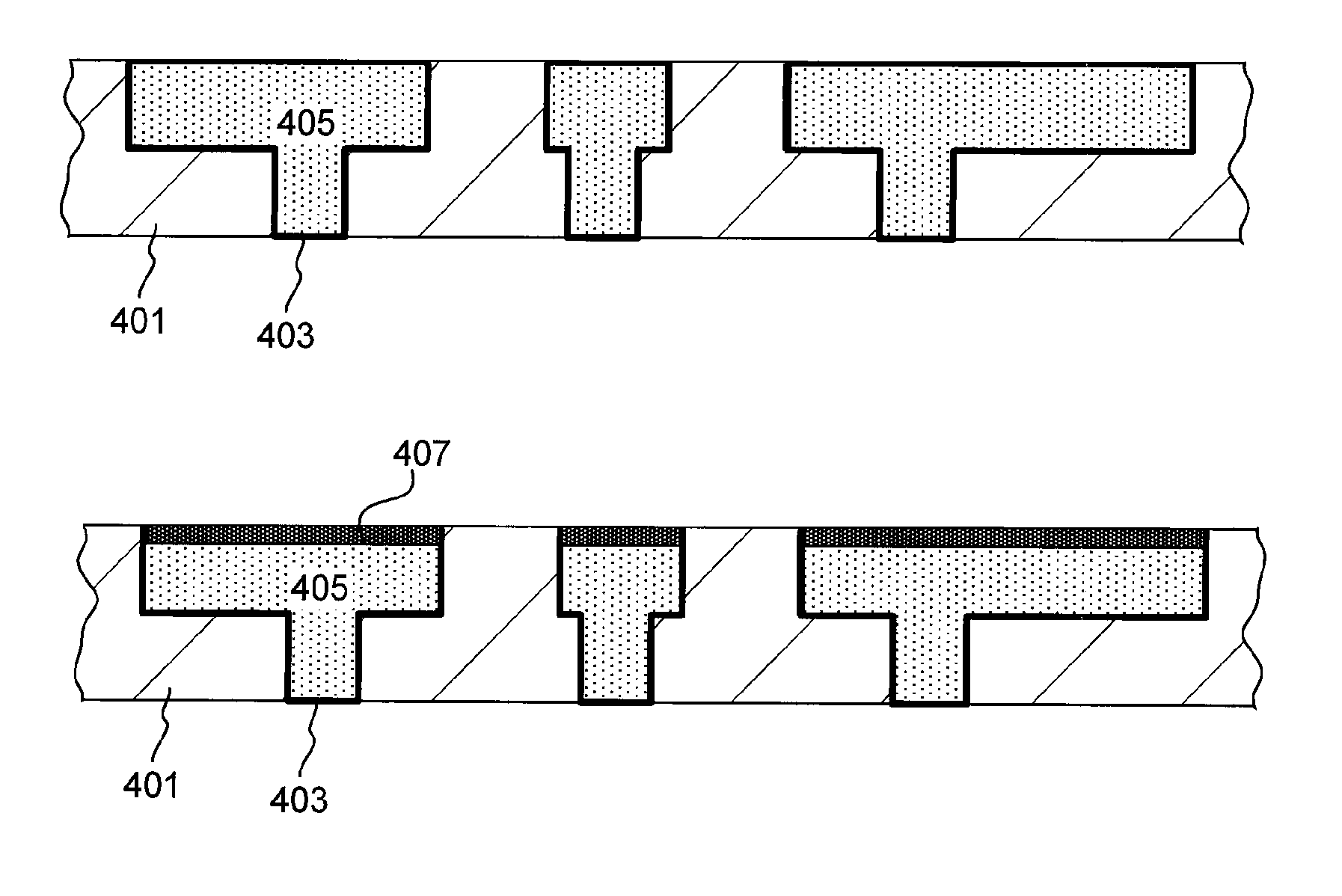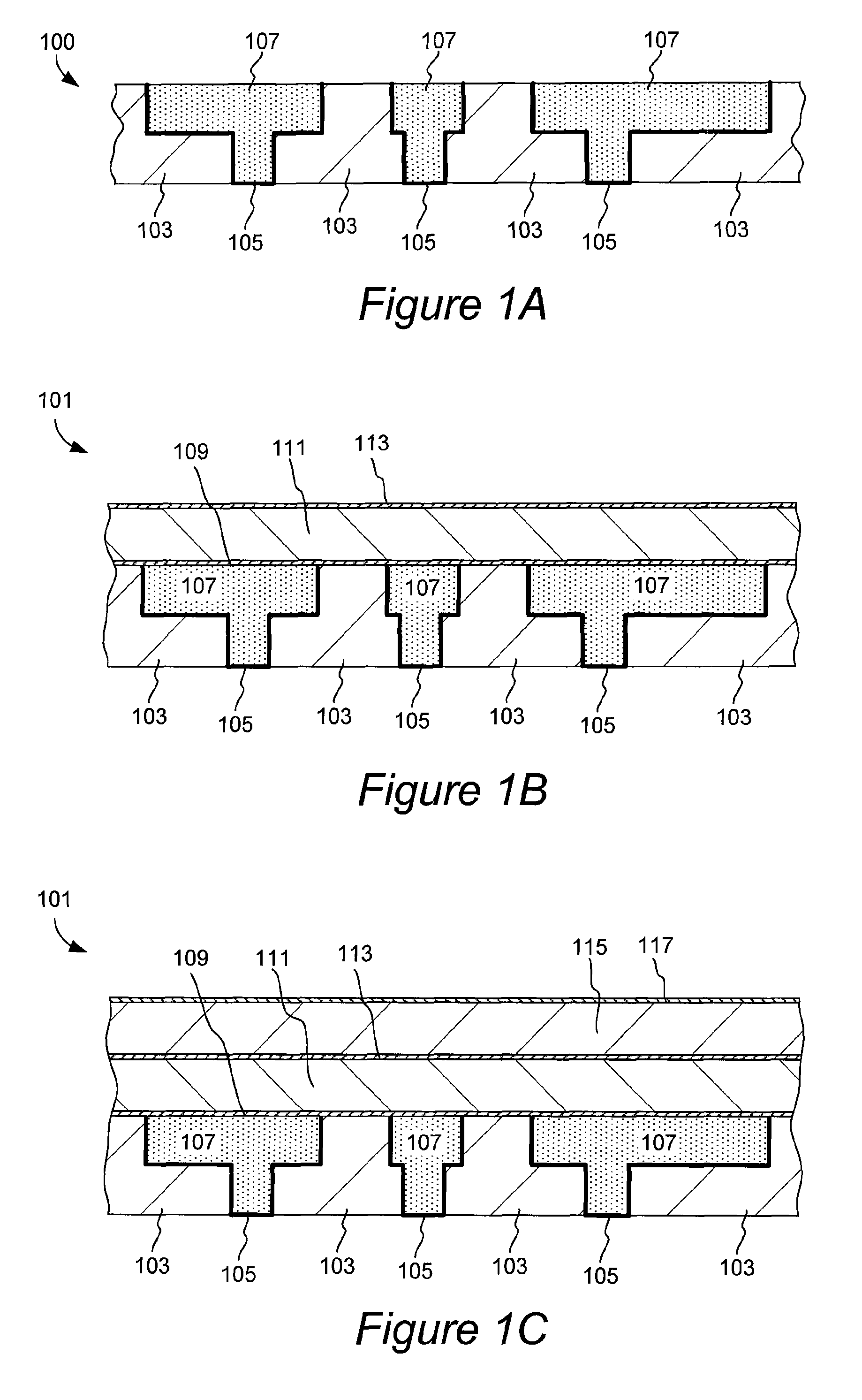Diffusion barrier and etch stop films
a technology of diffusion barrier and stop film, which is applied in the direction of basic electric elements, semiconductor/solid-state device manufacturing, electric apparatus, etc., can solve the problems of reducing the power consumption of complex integrated circuits, lack of suitable mechanical and electrical characteristics of low-k materials, etc., and achieve the effect of preventing undesirable oxidation of metal surfaces
- Summary
- Abstract
- Description
- Claims
- Application Information
AI Technical Summary
Benefits of technology
Problems solved by technology
Method used
Image
Examples
examples
[0115]Formation of hermetic diffusion barrier films with a dielectric constant of less than about 4 will be illustrated by several specific examples. FIG. 7 illustrates a simulation plot of effective dielectric constant of a bi-layer diffusion barrier film as a function of thickness of the top low-k silicon carbide layer. The total thickness of the diffusion barrier bilayer film having a bottom hermetic hydrogen-doped carbon layer and a top low-k silicon carbide layer is 350 Å in this example. Dielectric constant of hydrogen-doped carbon material provided in this illustration is about 4.2, while dielectric constant of the low-k silicon carbide material in this example is 3.5. Depending on relative thicknesses of the constituent layers, the bi-layer film may have an effective dielectric constant ranging from about 3.5 to 4.2. Preferably, bi-layer films with a dielectric constant less than about 4.0 should be used as diffusion barriers. Referring to the example, illustrated in FIG. 7,...
PUM
| Property | Measurement | Unit |
|---|---|---|
| dielectric constant | aaaaa | aaaaa |
| dielectric constant | aaaaa | aaaaa |
| dielectric constant | aaaaa | aaaaa |
Abstract
Description
Claims
Application Information
 Login to View More
Login to View More - R&D
- Intellectual Property
- Life Sciences
- Materials
- Tech Scout
- Unparalleled Data Quality
- Higher Quality Content
- 60% Fewer Hallucinations
Browse by: Latest US Patents, China's latest patents, Technical Efficacy Thesaurus, Application Domain, Technology Topic, Popular Technical Reports.
© 2025 PatSnap. All rights reserved.Legal|Privacy policy|Modern Slavery Act Transparency Statement|Sitemap|About US| Contact US: help@patsnap.com



